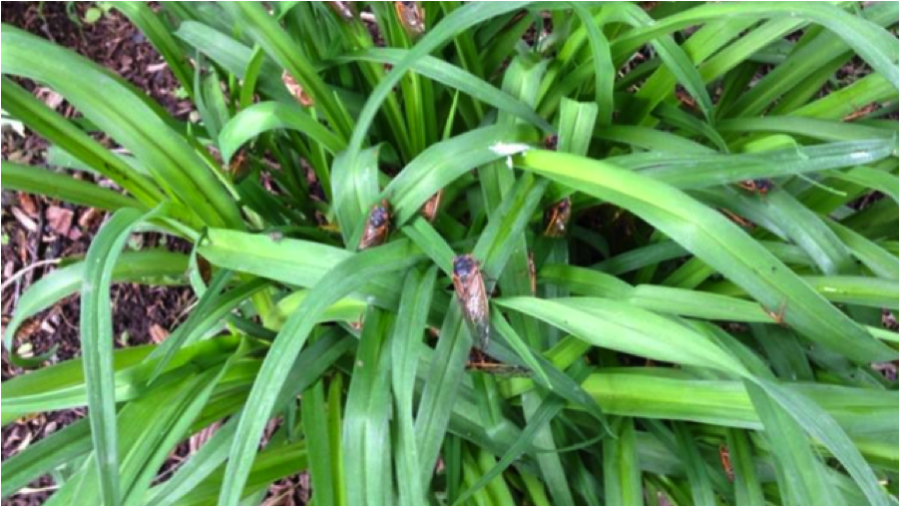Before many of the students here at Madison High School were even born, 17-year-old cicadas rose from a lifelong slumber underground to find their loved ones and mate. That was in 1996. Its 2013 now, and we’re seeing those 90s kids, billions of them.
There are many cicada species that emerge every year. However, this anticipated flood of cicadas belongs to a distinct population called Brood II, 1 of 15 broods that comprise a group called the periodical cicadas, a group that only matures every 13 or 17 years. The Brood II is 1 of the 12 broods with 17-year life cycles and these periodical cicadas are endemic to the eastern half of the United States, seen nowhere else in the world, lucky us. But how do these periodical cicadas keep track of time underground? The question has baffled scientists for years and the answer lies underground. Here, the cicadas suckle on tree roots for sugars and proteins. Every time a tree blossoms, a surge of these sugars and proteins is sent through the roots, alerting the cicadas that a year has passed. The blossoming of trees acts as a universal clock for the cicadas. Still, why is it that they emerge every 13 or 17 years? Well, 13 and 17 are both prime numbers, divisible only by themselves and 1. Biologists say this mathematical trick is a strategy that helps prevent the cicadas, one of the worlds longest living insects, from being eaten. For example, if cicadas had 12 year life cycles, all predators with 2,3,4 and 6 year life cycles have the opportunity to eat them.
Although the Brood II invasion this year sounds ominous, the cicadas are harmless. In fact, the emerging cicadas only have one thing on their mind: sex. This is understandable, as their excited hormones have been jailed underground for 17 years. Since 1996, the newborn cicadas have been biding their time underground, in a wingless nymph form. Underground, the cicadas molt four times and feed on a tree fluid called xylem. When the ground reaches 64 degrees on the 17th year, the cicadas know its time to emerge. The males come out first, still as nymphs, claim a tee branch, and molt for a final time, becoming adult-winged cicadas. With only a few weeks to live above ground, the males sing for sex like no other, making their stay on their surface loud and unpleasant for some of Earth’s other inhabitants. When a male successfully seduces a female, they do a dance and mate. Eventually, the female lays around 600 eggs on the branch, which the offspring will kamikaze off, hit the ground, and tunnel into the Earth restarting the 17 year process.
This year biologists are estimating that 30 billion cicadas will arrive from underground, a force that yields a ratio of roughly 600 cicadas per person. The knowledge of this has Madison with mixed feelings. Sophomore Audrey Rowland says that “the cicadas are disgusting, I never want to see them.” In contrast Sophomore Will Wraith said, “The cicadas flood is interesting in cool. Were watching a unique time in history.” What do you think about the attack of the cicadas? Vote in the pole below to share your opinion!
Source: http://www.foxnews.com/science/2013/05/16/cicadas-east-coast-march/
